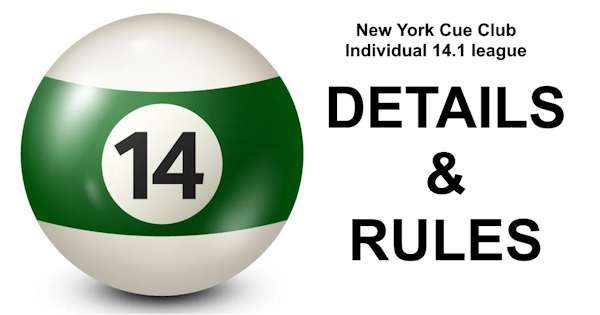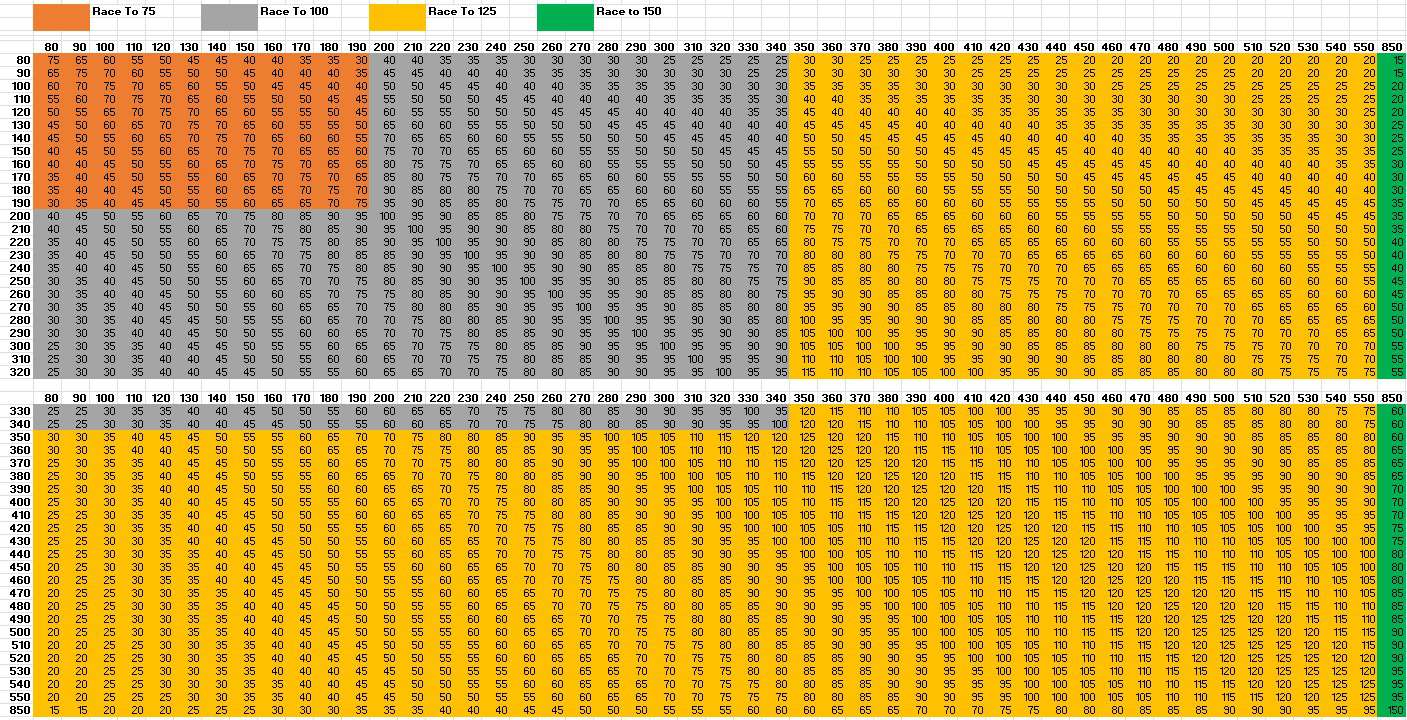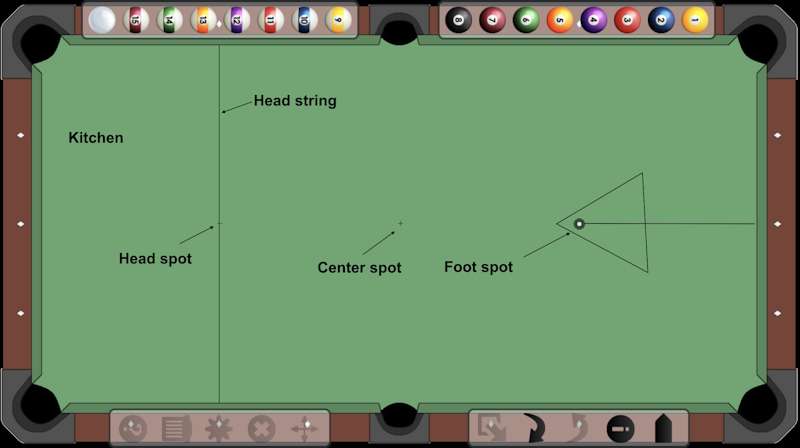
Please Read This Page Carefully- Important Changes Have Been Made!
Version 1.22 - Last modified 2025-09-10
1. Registration
- Each season the league registration form will be shared with members by email and social media. The form will include details such as dates, fees, payment method etc.
- The seasonal schedule is available here.
2. Divisions and Groups
- Each league will be organized into divisions. Within each division players will be divided into groups, called pools, of roughly equal size (e.g. Group1, Group2, etc.).
- The number of divisions and groups, and the assignment of players, will be decided by the league organizers based on the number of participants and their skill level.
3. League portal
- The New York Cue Club league portal is online at https://leagues.nycueclub.com.
- The email and phone number provided to the Court Reserve reservation system will be used by the league organizers to create an account on the portal.
- A temporary password will be sent by email. You can also use the password reset feature to obtain your password.
- The homepage of the current season of each league can be accessed by navigating to the portal homepage, and then to the appropriate Schedules & Standings section.
4. Schedule
- A season usually runs for 13 or 14 weeks and has 2 phases: the regular season and playoffs.
- This summer season will last 8 weeks. Players will be assigned weekly matches against other players in their group.
- The regular season schedule will become available shortly after registration closes.
- Each week, players are responsible for coordinating with their opponent to schedule their assigned match.
- Players must try their best to play their match during the week it is scheduled. Players have 3 weeks from the scheduled Monday date to play their match. If unplayed, a decision will be made by the League Director. One person will forfeit the match, one will win. In the case of a forfeit the score will be reported as the highest possible winning and losing score, ie: 100/99, 125/124 etc.
- The playoffs will last 3 weeks. Playoffs are a seeded single elimination tournament.
- ALL season matches must be played by the date of the last scheduled Monday match.
- The playoffs matches will be announced by the league organizers shortly after the regular season ends.
5. Table Reservations
- Players must reserve a table on the Court Reserve system to play a league match.
- The name of both players must be added to the reservation.
- Select the reservation type “League match - 14.1” outside of Prime Time (3pm - 7pm). Select the reservation type "League match - 14.1 - PT" during Prime Time.
- 3 hours is the appropriate length of a reservation for a straight pool league match.
- By default, matches are to be played on a 4.50" pockets table. Both players must agree if a match is to be played on a table with other pockets sizes.
6. Scoring
- The scoring will be done on the tablet next to the table using the application Scoreboard Master.
- It is the responsibility of both players to make sure the score is accurate after each game.
- Immediately after the match has concluded it is the winning player’s responsibility to record the score in the league portal.
- The reported score must include the handicap.
- When using the scoring app several things should be kept in mind:
- Set the “Race to” setting to the number of points the higher ranked player needs.
- The match ends when the higher ranked player reaches that number or the lower player reaches the number of points he has been assigned.
- Because of limitations with the application used, the handicap SHOULD NOT be added to the score at the beginning of the match. Instead the players must be mindful of the handicap. The match ends when either player reaches their target score according to the handicap chart.
- It is the responsibility of the outgoing player to enter the result of the inning after each and every inning has ended, even after innings that resulted in no points scored or deducted. (examples: a legal safe, a miss on a legal shot).
- It is the responsibility of the incoming player to verify that the previous inning has been scored correctly by the outgoing player and that the application has the correct player currently at the table.

7. Standings
- The standings within a group will be determined using the following criteria:
- Win/loss record.
- Points For/Against
- Points Differential
- There will be no unrecorded matches, The no-contest rule has been eliminated.
- If a player feels he/she made a reasonable effort to make the match happen and that the responsibility for the match not happening relies heavily on the opponent, please reach out to the League Director as early as possible. He will try to facilitate the match and determine the outcome if unplayed.
8. Rules
Matches are played in accordance with BCA/WPA rules found here. The following rules are NYCC additions, changes, or clarifications:
Lagging
Lag for first break. Flipping for the break is acceptable if both players agree. The winner may take the break or make the opponent break.
Racking
- Rack your own for the initial opening break and for the opening breaks that happen after a 3-foul penalty/re-rack.
- Rack for your opponent for other normal re-racks.
- When racking for the opponent, the player must make a reasonable effort to eliminate as many gaps as possible.
- When the opponent racks, the player at the table is allowed to inspect the rack and, within reasonable limits, demand a tighter rack.
Equipment
- Jump cues are NOT allowed.
- Template racks are NOT allowed.
Disagreement resolution
If a disagreement cannot be resolved and a league organizer is not present, the decision goes to the player at the table.
Special racking situations
Some end-of-rack situations where the last ball and the cue ball interfere require special consideration. Use the chart below to deal with such situations.
- With ball-in-hand after a foul, any ball is shootable as long as the entire ball is over the headstring.
Equipment
- Jump cues are NOT allowed.
- Template racks are NOT allowed.
Disagreement resolution
If a disagreement cannot be resolved and a league organizer is not present, the decision goes to the player at the table.
Special racking situations
Some end-of-rack situations where the last ball and the cue ball interfere require special consideration. Use the chart below to deal with such situations.


